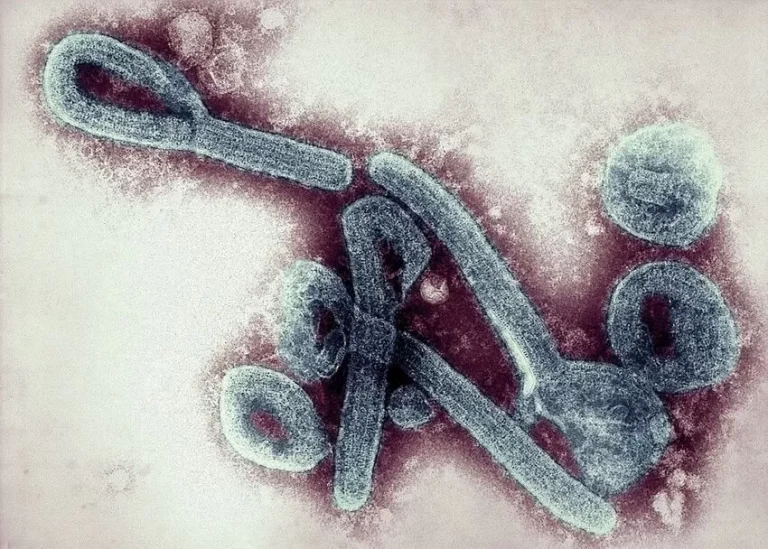
According to the Ghana Health Service (GHS), one close contact in the new Marburg Virus Disease cases in Ghana reported symptoms after the maximum incubation period. The individual tested positive together with his close contact (yet to be corroborated by IPD), but he passed away on July 21, 2022. This information has not yet been confirmed by the IPD.
At this time, forty new contacts have been found in the Savannah Region, and each of these individuals is now being followed up on.
Eleven of the forty people who have been in touch with the outbreak are healthcare workers (HCW), and daily monitoring of temperature as well as overall health and wellness is being conducted by healthcare personnel in the district that has been impacted.
On Sunday in Accra, the Director-General of the Ghana Health Service, Dr Patrick Kuma-Aboagye, disclosed this information during a press briefing (July 24, 2022).
The Global Health Service (GHS) discovered a possible case of viral hemorrhagic fever on June 26, 2022; the patient’s first symptoms appeared on June 22, 2022. It was the cause of two people losing their lives.
On July 7, 2022, the Marburg Virus Disease was proven to have been present by the Noguchi Memorial Institute of Medical Research (NMIMR).
On July 15, 2022, the results were validated by Institut Pasteur in Dakar (IPD), which had been conducting the research.
The Ashanti area was the location of the two fatal cases of the Marburg virus disease (MVD) that were reported previously.
The first victim was a man of the same age who worked as a farm labourer in the Adansi North area of the Ashanti region. This particular individual had a history of travelling to the Western region.

In the days leading up to the commencement of symptoms on June 24, he travelled all the way from the Western area to the Ashanti region.
On June 26, he went to get medical treatment, and on June 27, he passed away.
Sawla-Tuna-Kalba is a district in the Savannah area that borders both Burkina Faso and Côte d’Ivoire. This is where the case was carried and buried after being investigated.
The interment took place prior to the findings of the laboratory testing for MVD being made known to the public.
The second incident involved a man of the same age who worked as an agricultural labourer in the Bekwai Municipality in the Ashanti area. He was 51 years old.
On June 28, he sought medical attention at the same hospital as the initial patient, but he passed away on the same day.
Both patients reported having a fever, general malaise, bleeding from the nose and mouth, as well as bleeding from the subconjunctival space (bleeding of the blood vessels in the eyes).
In all of West Africa, there has only been a single other instance of an MVD epidemic being documented, and this is the very first time that MVD has been detected in Ghana. According to the World Health Organization, a cluster of MVD might pose a significant risk to the public’s health because the disease is very contagious and frequently results in death (WHO).
During the press briefing that took place on Sunday, Dr Kuma-Aboagye stated that the second case that came from NMIMR has not yet been confirmed by IPD.
He went on to say that a follow-up investigation of the case and clinical records revealed that the case did not satisfy the VHF diagnosis and that it was instead a chronic instance of peptic ulcer illness.
Further research is being carried out, and it has been confirmed that everyone who had contact with the “case-patient” has now finished the required 21-day quarantine and is healthy.
Dr Kuma-Aboagye stated that the implementation of several interventions, with a focus on three regions: Ashanti, Savannah, and Western, is currently underway and that a cumulative list of 118 contacts in three districts in each of the three regions has been identified: 50 contacts in Ashanti, 48 contacts in Savannah, and 20 contacts in Western.
Nineteen of the contacts were healthcare workers, while the remaining 99 were close family members or household/community contacts. As of July 21, 2022, all of the contacts had finished the statutory 21-day follow-up that was required of them.
Because of this, one close contact began experiencing symptoms after the maximum incubation time had passed, tested positive alongside another close contact (whose results have not yet been confirmed by IPD), and passed away on July 21, 2022.
According to Dr Kuma-Aboagye, there have been 40 more contacts found in the Savannah Region, and 11 of those contacts are Health Care Workers. The remaining contacts are now being followed up on.